~ THE INCREDIBLE STORY OF THE “PLANTS THAT KILL!”
• INTRODUCTION – LEGENDS OF A “MAN-EATING TREE.”
It’s 1878.
Somewhere in the backlands of Madagascar, German explorer Carl Liche, his companion Hendrick and a party of cave-dwelling Mkodo tribes-people are hacking their way through the jungle. At a bend in a sluggish creek, they come upon a remarkable plant, something like an 8-foot-tall pineapple. 8 agave-like leaves, each 11 or 12 feet long and studded with hook-like thorns, surround a depression filled with honey-sweet liquid. From the top of the tree sprout long hairy green tendrils and a set of tentacles, “constantly and vigorously in motion, with … a subtle, sinuous, silent throbbing against the air.”
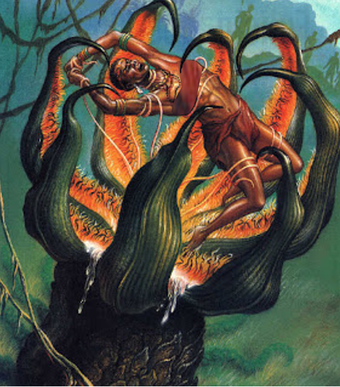
Chanting, the Mkodo single out one of their women and force her at javelin-point to climb the trunk. With obvious loathing, she drinks the syrup-like fluid. Then … writes Liche himself:
“The atrocious cannibal tree, that had been so inert and dead, came to sudden savage life. The slender delicate palpi, with the fury of starved serpents, quivered a moment over her head, then as if instinct with demoniac intelligence fastened upon her in sudden coils round and round her neck and arms; then while her awful screams and yet more awful laughter rose wildly to be instantly strangled down again into a gurgling moan, the tendrils one after another, like great green serpents, with brutal energy and infernal rapidity, rose, retracted themselves, and wrapped her about in fold after fold, ever tightening with cruel swiftness and savage tenacity of anacondas fastening upon their prey.”
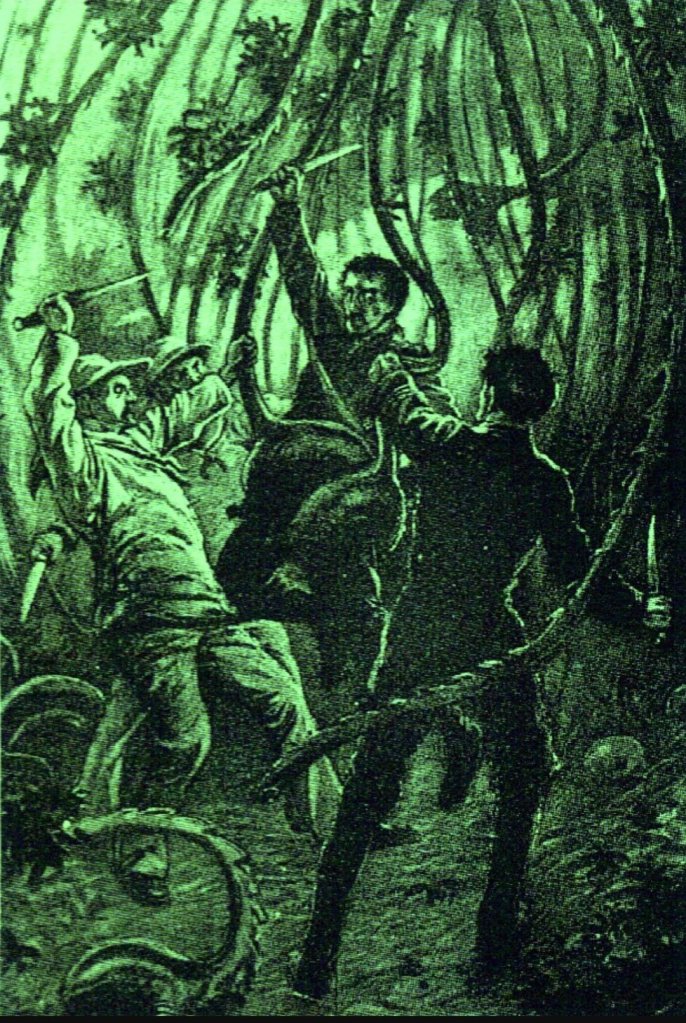
Liche and Hendrick do nothing heroic. They watch as “the great leaves slowly rose and stiffly, like the arms of a derrick, erected themselves in the air, approached one another and closed about the dead and hampered victim with the silent force of a hydraulic press and the ruthless purpose of a thumbscrew.”
Hendrick drags Liche from the scene as the Mkodo celebrate.
Three years later, Liche wrote up the grisly experience for the South American Register. Some readers took it seriously. Travellers had been returning from the jungles of the world with astonishing stories: ferocious manlike apes, vine-shrouded lost cities. The gorillas and the Mayan ruins turned out to be real. Why not the man-eating tree?
Liche’s story got more mileage in 1924, when Chase Osborn, former governor of Michigan turned travel writer, published “Madagascar, Land of the Man-Eating Tree.” Osborn said missionaries had vouched for the tree’s existence.
Although this legend of a “man eating tree” is probably an imaginative account, there are plants that do kill to live.
Terrifying jaws, murderous cups, a liquid of death and even a plant that looks and acts like the deadly cobra.
This is the murderous world of Carnivorous plants.
Where life-force of an insect is
SUCKED.
OUT.
DRY.

• PLANT CARNIVORY – THE WHY BEFORE THE HOW
Charles Darwin, the famous naturalist and biologist, was the earliest person to write about botanical carnivory in his famous 1875 book, Insectivorous Plants. Darwin wanted to understand the nature and the activity of carnivorous plants. He employed available scientific instruments, including a primitive optical microscope, and was the first to demonstrate the carnivorous mechanisms in a variety of plants belonging to several different plant families and provided a detailed account of the reality of plant carnivory, which was then recognized and accepted by the broader scientific community.

However, the molecular details of this phenomenon remained elusive until the dawn of the 21st century.
About 70 million years ago, when dinosaurs roamed the Earth, a genetic anomaly allowed some plants to turn into meat eaters. This was done in part, with a stealthy trick: repurposing genes meant for their roots and leaves and using them instead to catch prey. This step is one of three that some non-carnivorous plants took over tens of millions of years to allow them to turn into hungry carnivores.
The meat-eating shift gave these plants a number of advantages. In effect,wrote Darwin himself, “carnivorous plants have turned the tables by capturing and consuming nutrient-rich animal prey, enabling them to thrive in nutrient-poor soil.”

But how exactly did the plants turned their attention to insect diet?
Scientists believe that it was by three steps –
1) First, about 70 million years ago, an early non-carnivorous ancestor of the three modern plant carnivores underwent a genetic change of duplication of genes. This allowed the plant to free up the leaf and root genes to diversify, allowing them to serve other functions. Some leaf genes developed into genes for traps, while carnivorous nutrition and absorption processes were guided by genes that otherwise would have served roots seeking nutrition from soil.

2) The second step in their journey to carnivory occurred once the plants began receiving new nutrients from prey. At that point, traditional leaves and roots were no longer as necessary. Many genes that were not involved in carnivorous nutrition began to disappear.
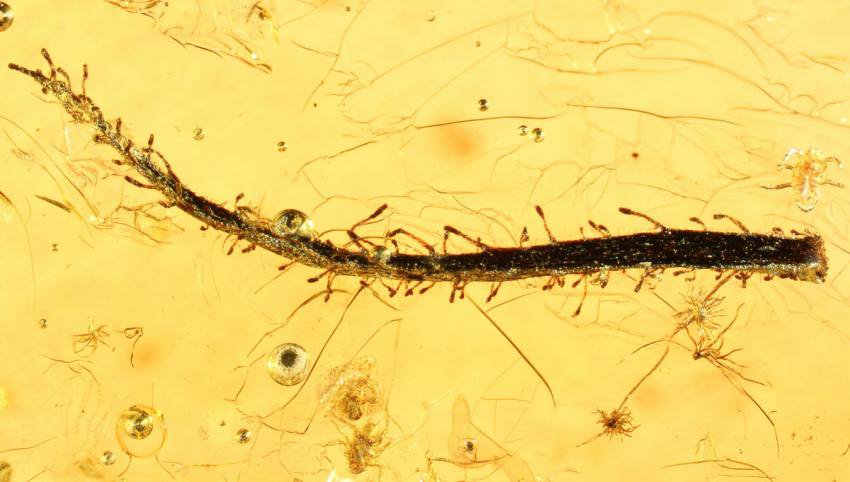
3) In the third step of the transformation to carnivory, the plants underwent evolutionary changes specific to their environment. The roots and leaves evolved to be trap-specific. Genes for roots that were once used to seek out and absorb nutrients from soil were now ordered to create enzymes needed to digest and absorb nutrients from prey. Genes once used in glands that secreted nectar to attract pollinating insects were summoned to traps, where they produce substances to attract prey.
Thus, the modern carnivorous plants were born.

• BUILT TO KILL, MAIM, DISMEMBER AND DEATH!
It is estimated that there are more than 750 species of carnivorous plants around the world. These plants have held their ground for more than 70 million years in almost every continent and habitat unimaginable, except the Polar Regions and the extreme deserts.
What has been crucial to their success in evolution is their ability to trap and ensnare a large variety of prey with their equally astonishing mechanisms, some are simple while others are astonishingly complex in nature.
1) FLYPAPER TRAPS – A sticky substance is secreted to capture small insects on leaves. Quite simply, an insect is attracted by the often sweet smelling/wet looking sticky substance that the plant secretes. After it lands on the plant, it is eaten alive by the plant.

2) SNAP TRAPS: Leaves open and snap closed around unsuspecting prey. Quite frightening to watch, as soon as an insect land on the open leaves, both closes in a snap, like a bear trap. The insect dies a slow, painful death as the liquids digest the insect. Alive.

3) PITFALL TRAPS: A pitcher-shaped leaf traps food that falls inside. Here, it is the shape of the leaves that spells death to the insects that come towards the plant. The plants employ sweet smell to lure unsuspecting prey and when the insect drowns in the liquid, the plant digests the edible parts.
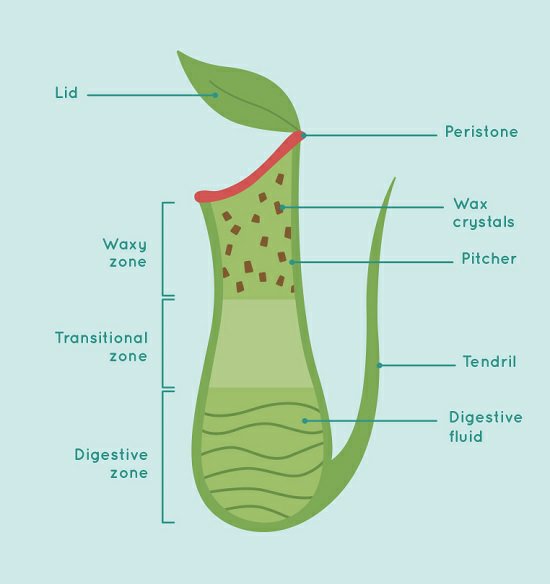
4) LOBSTER-POT TRAPS: This is a trap similar to the traps used to catch lobsters. A lobster pot has an entrance prey can easily find on the outside and enter but the entrance is difficult to find or exit from the inside. Once inside, if the prey find the entrance or figure it out they can easily leave. Tired, the insects die.

5) PIGEON TRAP: The prey enter the trap by pushing past inward pointing hairs. Once inside the trap they cannot get back out past the hairs. This is the way pigeon traps work except thin metal rods are used instead of hairs.

6) BLADDER TRAPS: It has been argued the most complex plant leaf on this planet is the bladder trap. The traps ready themselves by pumping water out of the sealed trap creating what would be considered a vacuum if air were involved. When triggered, they work so quickly that the highest speed video cameras show the prey outside the trap in one frame and already sucked inside on the next frame. Once inside the prey is digested and the trap rearms itself.

• DEATH BY A THOUSAND JAWS – THE VENUS FLYTRAP (Dionaea sp.)[J.Ellis]
It was Charles Darwin who first described these plants in his famous book, way back in 1876.
He marvelled at the exquisite quickness and power of the Venus flytrap, a plant he called “one of the most wonderful in the world.”
The plant secretes nectar on to its open traps. The unsuspecting insect lands on the open leaf. And it snaps shut!
He showed that when a leaf snapped shut, it formed itself into “a temporary cup or stomach,” secreting enzymes that could dissolve the prey. He noted that a leaf took more than a week to reopen after closing and reasoned that the interlocking spines along the margin of the leaf allowed undersized insects to escape, saving the plant the expense of digesting an insufficient meal. Darwin was astonished at the hair-trigger speed of the Venus trap’s movement—it snaps shut in about a tenth of a second—to the muscle contraction of animals.
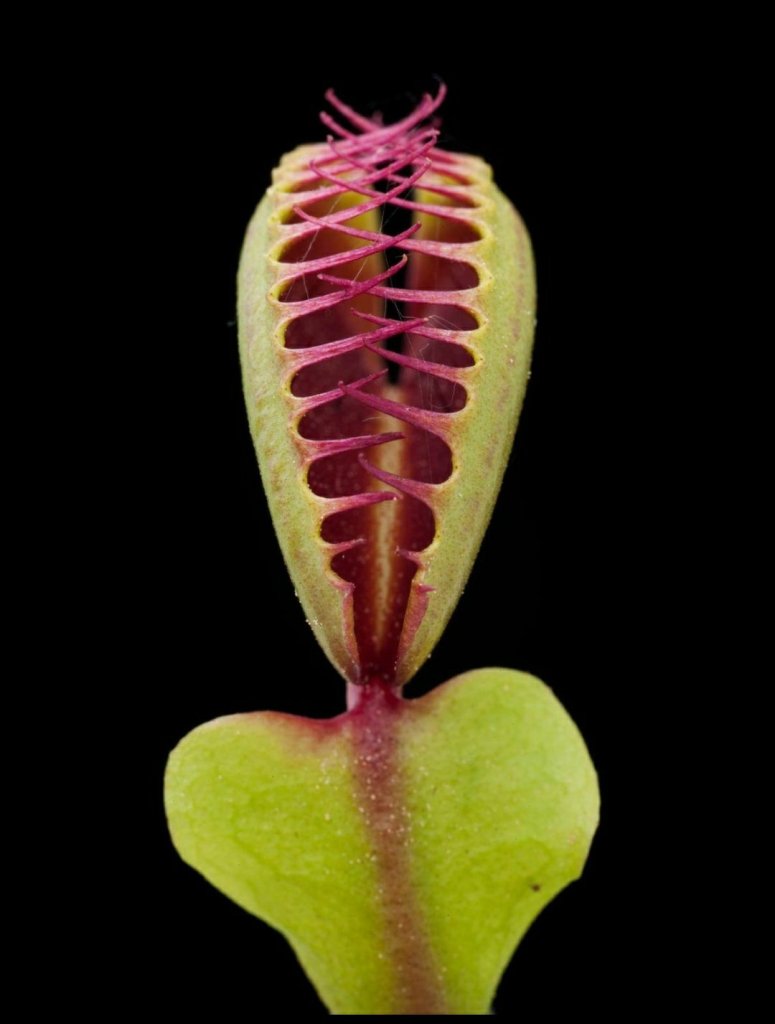
However, the exact physiology was explained only recently, in the 21st century.
Alexander Volkov, a plant physiologist at Oakwood University in Alabama believes he knows the mechanism behind the Venus Fly Trap.
There are a couple of tiny hairs inside the inner leaflet of the plant that hold the answer.
When an insect brushes against a hair on the leaf of a Venus flytrap, the bending triggers a tiny electric charge. The charge builds up inside the tissue of the leaf but is not enough to stimulate the snap, which keeps the Venus flytrap from reacting to false alarms like raindrops. A moving insect, however, is likely to brush a second hair, adding enough charge to trigger the leaf to close.


Volkov’s experiments reveal that the charge travels down fluid-filled tunnels in a leaf, which opens up pores in cell membranes. Water surges from the cells on the inside of the leaf to those on the outside, causing the leaf to rapidly flip in shape from convex to concave, like a soft contact lens. As the leaves flip, they snap together, trapping an insect inside.
As the digestive enzymes work their way, the insect is made into a smoothie and taken up by the plant.

• ALL THAT GLITTERS….. IS DEATH! – THE SUNDEW PLANT (Drosera spp.)[Linnaeus]
In 1860, soon after he encountered his first carnivorous plant—the sundew Drosera—on an English heath, the author of Origin of Species, Darwin wrote, “I care more about Drosera than the origin of all the species in the world.”
These incredible meat eaters are found growing in a wide variety of conditions on all continents with the exception of Antarctica.
They don’t have sweet smell to lure insects. But what they do have is death.
Lured by colourful foliage and glistening droplets of sticky fluid resembling water or honeydew atop a short glandular stalk, insects alight on the leaves only to find themselves permanently stuck.

In most species, the individual, sticky stalks can bend towards the prey, effectively suffocating it. The leaf blade can often fold and curl around the prey, aiding the subsequent extraction and absorption of nutrients by special glands located on the leaf itself.
In addition to its sticky tentacles, this sundew possesses longer, touch-sensitive tentacles that can snap forward, hurling insects at its flypaper-like glue traps. The sticky tentacles then slowly bend to move the prey to spoon-shaped leaves, from where it is slowly digested.
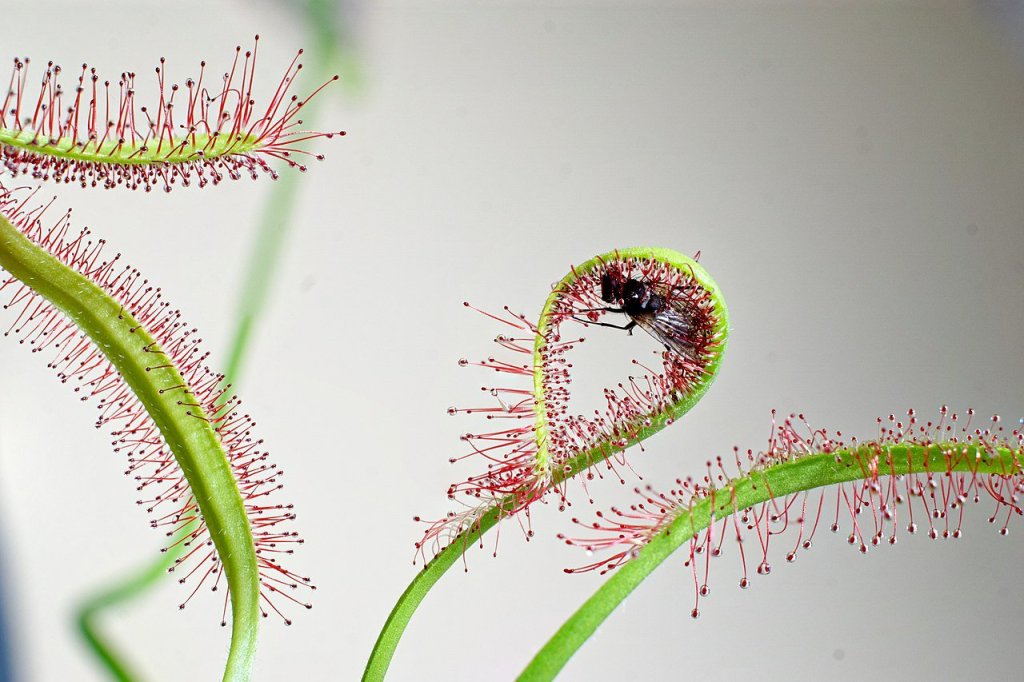
Scientists have found out that the secret to the quick tentacles probably involves releasing pent-up hydraulic pressure in a sudden burst. And it happens fast. The sundew takes about 75 milliseconds to catapult prey with snap tentacles, which is by far the fastest motion reported from the sundew genus. It is quick enough to outsmart walking prey animals, and is a bit faster than the snap-trapping action of the famous and closely related Venus flytrap and waterwheel plant.
After the insect is trapped, digestive juices suck the life force out of the insect.

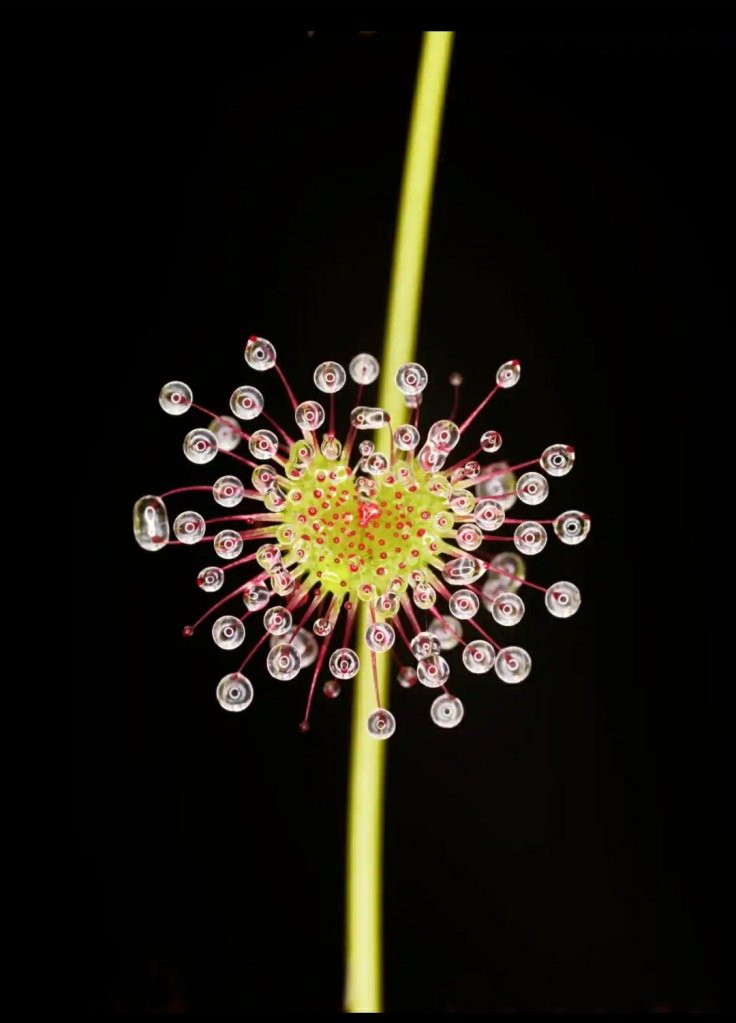
• THE USAIN BOLT OF THE PLANT KINGDOM – BLADDERWORTS (Utricularia spp.)[Stuttgart]
Who needs roots when you are as fast as Usain Bolt?
Its a highly successful meat eater that has been around the block for more than 50 Million years and will likely be so for as long as there will be humans.
It holds multiple records in the plant kingdom,
Apart from being the fastest plant in the world, this is also the plant family with the most complex trapping mechanism. Found in every continent except Antarctica, it also holds the record of being the largest family of Carnivorous plants, with approximately 233 species.
Meet the Bladderworts. The name means Bagpipe.
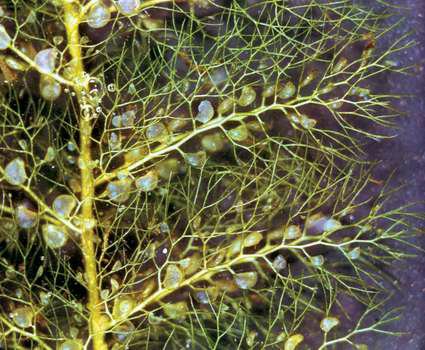
These incredibly complex plants have developed a unique trap, unlike any found, to ensure they have their prey uninterrupted.
They all have small bladder-like organs along the root system designed to catch and digest tiny invertebrates that thrive in the moist habitats occupied by these plants. These “bladders” have minute appendages – essentially triggers – next to a closed flap.
Their traps, the bladders from which they get their name, are tiny transparent capsules.
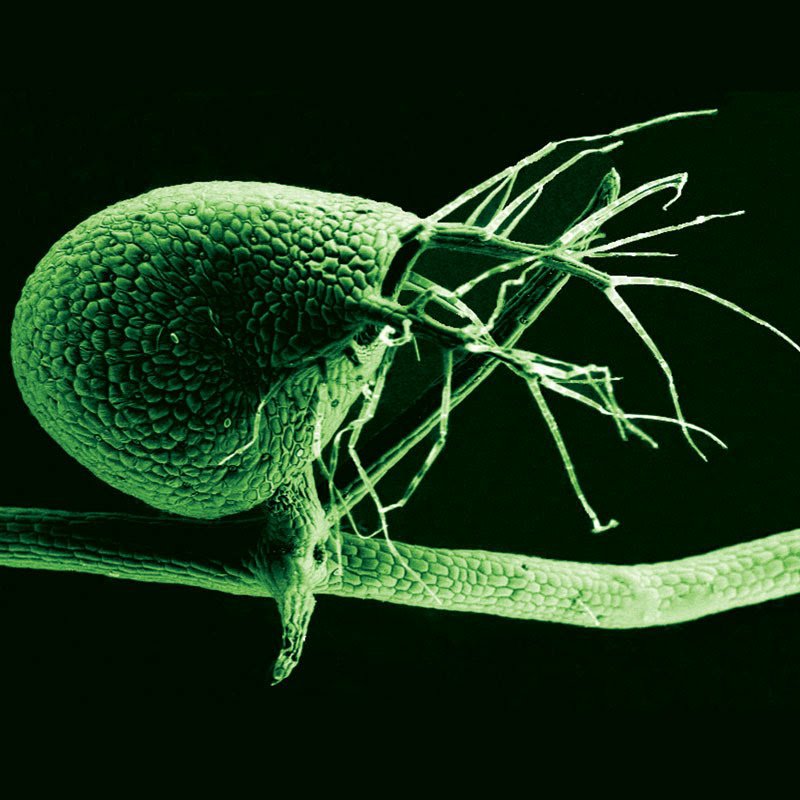
Glands on the inner surface of these are able to absorb water, and in doing so create a partial vacuum inside it. Each has a tiny door fringed with sensitive bristles. If a small water creature, such as a mosquito larva, touches one of these, the bristle acts as a lever, slightly distorting the edge of the door so that it no longer fits tightly on the rim. Water rushes in, sweeping the door inwards and with it, the little organism that touched the hair. The swirl of water within the capsule pushes the door back again and the prey is imprisoned. The whole action is completed within a fraction of a millisecond. Once again, the glands start to suck out the water. Another set of gland secretes digestive acids and the captive is killed, dissolved and consumed. The bladderwort has fed. Within two hours, the bladder’s partial vacuum has been restored and the trap is reset.
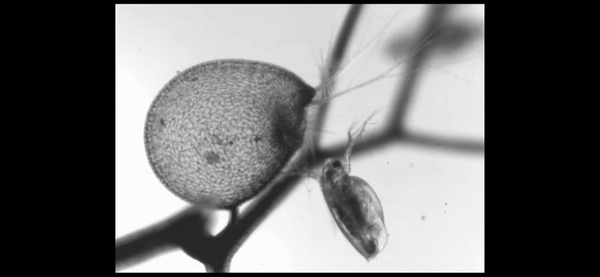
The Utricularia holds secrets still. It has been seen that the plant employs bacteria that play a mutualistic role in a complex food web that exists in and around the bladders. It remains a mystery whether these trap-dwelling bacteria secrete chemicals in addition to serving the mutualistic roles.
It will be a long time before we fully understand these incredible plants completely.

• THE PIT OF DOOM – The Pitcher Plant. (Nepenthes spp.)[Linnaeus]
If these plants could speak, they would have told the dead insects, which it feasts upon, “So happy for you to drop in!”
Although the spotlight in the carnivorous plant worlds are usually stolen by Sundews and Venus Flytraps, Pitcher plants like the Nepenthes in contrast don’t seem to do much. It looks like they’re just sitting there, waiting for gravity to do the work, almost like couch potatoes. You cannot be more wrong.
In fact, there’s a lot going on.
The name of these plants denote the unusual shape of the plant’s leaves. Shaped like an elongated cup or a pitcher to hold water, it looks harmless apparently. There are no glistening droplets of glue to lure the insects nor the ferocious jaws. What they do have is a pit.
An abyss. A graveyard.
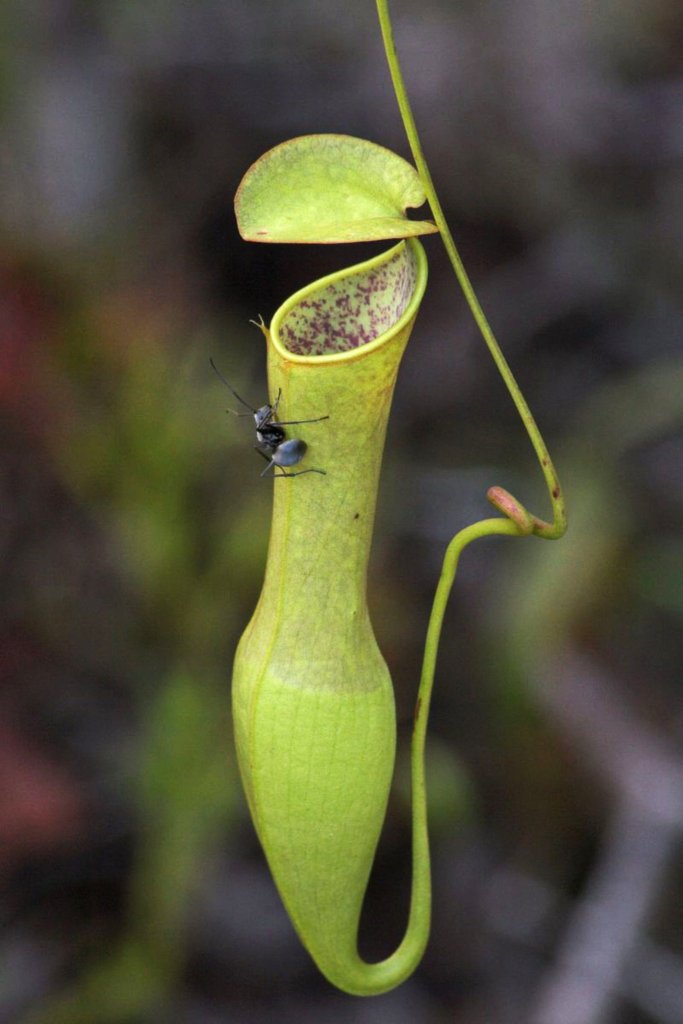
The basic pitcher mechanism is well-known. It’s a specialised leaf holding liquid in it. Around the rim of the pitcher is the peristome. In the image at the top,that’s the ridged entrance to the pitcher. This is where you find the nectaries that entice visitors to the plant. Microscopic ridges on the peristome make it much easier to move into the pitcher than out. When this gets wet it becomes even harder to keep a foothold. Pitchers can also have wax around the upper part of the inner wall. Oddly, this can work in the opposite way to the peristome, with the wax making the surface unwettable. For some insects that rely on moisture for a foothold, this becomes a very slippery surface. If the wax detaches from the wall then that adds to treacherous nature of the surface.
The prey fall into this pool and are digested. What varies is not just how the prey fall in, but what they fall into.

The liquid is a juice that dissolves the body of the victim, but not all pitchers use the same liquid. In some the liquid is Viscoelastic. It’s a liquid that resists, the more you push. Basically, the more you resist, the more you drown in it.
After the helpless insect drowns, it is converted into a solution of amino acids, peptides, phosphates, ammonium and urea, from which the plant obtains its mineral nutrition (particularly nitrogen and phosphorus).

• THE RISE OF THE COBRA COMMANDER – The Cobra Lily. (Darlingtonia californica)[Torrey]
It looks like the King Cobra. Its trapping mechanism is heartless, like the lethal snake itself. Aptly named, The Cobra Lily truly lives up to its deadly reputation of hunting and killing insects. It has another terrifying power – it can survive fire and can regenerate from its roots!
A variety of pitcher plant that is restricted to California and its surrounding areas, the Cobra Lily is unique as it grows happily on areas rich in heavy metals, which would be toxic to most plants.
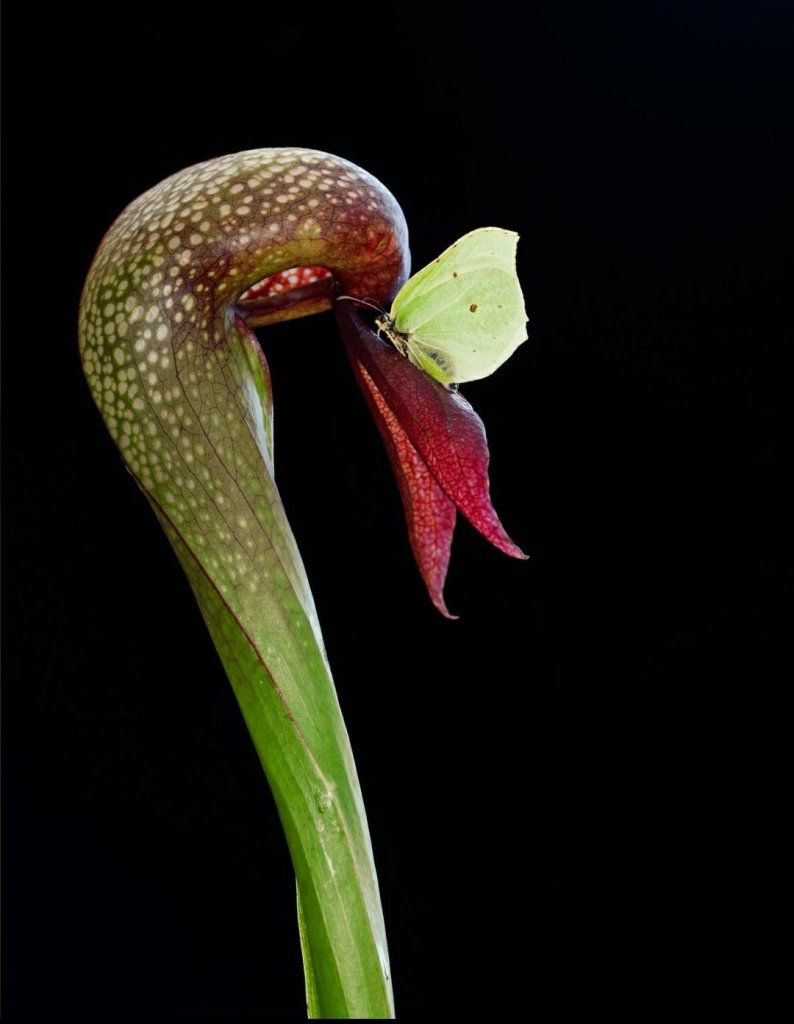
The cobra lily is not restricted to nutrient-poor acidic bogs and seepage slopes. But many colonies actually thrive in Ultramafic soils, which are in fact, basic soils, within its range.
Like most carnivorous plants, the cobra lily is adapted to supplementing its nitrogen requirements through carnivory, which helps to compensate for the lack of available nitrogen in such habitats.

The Cobra Lily employs a foul smell to lure their insect prey along with a promise of precious sugar rich nectar.
The plants entice insects into their pitcher-shaped traps on their long leafy fangs. Insects that land on the plants gorge on the nectar, which leads them to the cobra lillies’ downward facing openings. Once inside a cobra lily, insects become confused by the light shining down through the transparent windows — called fenestrations — at the top of the chamber.

Insects are drawn to light, but the false exits only serve to confuse and tire the plant’s prey. The entrance to the pitcher curls into the chamber obscuring the only way out. After buzzing around within the chamber and repeatedly slamming into the fenestrations, these unlucky insects fall or crawl down into the pitcher’s descending tube. The tube is lined with tiny downward facing hairs to discourage the insects from crawling back up to safety. Exhausted, the insects eventually drown in the puddle of fluid at the bottom of the pitcher. Symbiotic midge larvae and bacteria living in the fluid, assist the cobra lily in digesting the doomed bugs. The plant then absorbs the nutrients through cells that line the inside of the pitcher tube, much the same way that roots absorb nutrients and water from the soil.
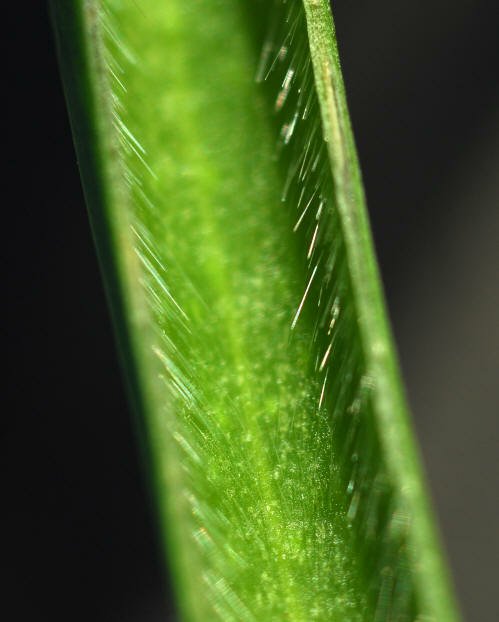
• THE DEATHLY EMBRACE – The Butterworts. (Pinguicula spp.)[Linnaeus]
Not all hugs are meant to be of love. Some signal death.
The Butterworts do just that. They are a pretty large family of plants consisting of approximately 80 species, 13 are native to Europe, 9 to North America, and some to northern Asia. The largest number of species is in South and Central America.
The name Pinguicula is derived from a term coined by Conrad Gesner, who in his 1561 work entitled Horti Germaniae commented on the glistening leaves: “propter pinguia et tenera folia…” (Latin pinguis, “fat”). The common name “butterwort” reflects this characteristic.

Looks can kill. They are efficient predators that employ the use of extremely sticky leaves that entrap the prey in a deathly embrace.
The leaves of Pinguicula lutea, up close, bear short hairs, (seen at the base of the lower leaf) which secrete sticky mucilage. Invisible in the shiny surface of the picture are tiny round glad hairs that digest insects that are caught in the mucilage.

The leaves of Pinguicula are yellowish in colour, which is probably the source of the common name butterwort. The trapping mechanism of Pinguicula is a simple one. Insects become stuck in the sticky mucilage (which they may mistake for water or nectar). When an insect becomes stuck on the mucilage, the edge of the leaf slowly rolls over. The leaves never completely close. When the insect is digested, the leaf edges unroll and the leaf becomes more nearly flat.

There are two kinds of glands on the surface of the leaf. The stalked glands are the sticky ones and trap the insect. The short, surface glands provide the digestive enzymes, including phosphatases, proteases, and ribonuclease, and later resorb the digested material. In addition to insects, Butterworts also make use of nutrients in pollen trapped on their sticky leaves.
Curiously, they depend on the bees for their pollination. The flowers of Pinguicula lutea are bright yellow. This colour is attractive to bees. A bee could fit easily into the wider part of the flower of Pinguicula lutea. There is a small pointed tip on the flower, the spur (at left), which contains a droplet of nectar. A bee, properly oriented within the flower, could feed on the nectar if it has a long tongue. In addition, the bees transmit the plant’s pollen too.
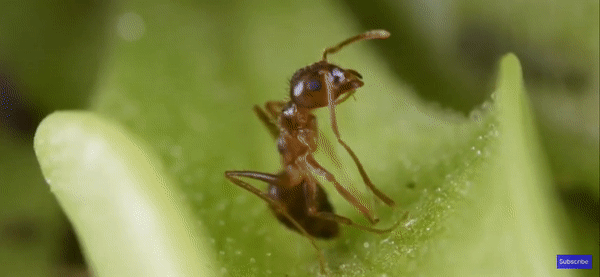
• EPILOGUE – THEY LURE INSECTS INTO DEATH TRAPS, THEN GORGE ON THEIR FLESH. IS THAT ANY WAY FOR A PLANT TO BEHAVE?
Carnivorous plants have been, and continue to be, an endless source of fascination for scientists and non-scientists alike. Not surprisingly, the idea of “killer” plants is a staple trope of science-fiction novels, horror films and even Broadway shows.
There is something wonderfully unsettling about a plant that feasts on animals. Perhaps it is the way it shatters all expectation. Carl Linnaeus, the great 18th-century Swedish naturalist who devised the system for ordering life, rebelled at the idea.
For these plants to actually eat insects, he declared, would go “against the order of nature as willed by God.” The plants only catch insects by accident, he reasoned, and once a hapless bug stopped struggling, the plant would surely open its leaves and let it go free.

He never could have been more wrong.
Darwin, fascinated with his research on carnivorous plants, exclaimed, “This is no accident. Its adaptation!”
From busy Japanese prefectures to the lush jungles of south-east Asia, the billabongs of northern Australia to the rain-drenched mountains of South America, previously unknown species of carnivorous plants are being found and many more await discovery.
Scientists hypothesize that since these plants can survive, by eating insects, so easily in the areas where the soil is poisonous to most others, they have been so successful in conquering the harshest of all environments.

What is heart-breaking is the fact that these efficient predators are being threatened by the cruelest predator of all – man.
The black market trade and poaching of exotic carnivorous plants is so vigorous now that botanists are keeping the location of some rare species a secret. But even if the poaching of carnivorous plants can be halted (a very big if), they will continue to suffer from other assaults. Their habitat is disappearing, to be replaced by shopping centres and houses. Fires are being suppressed, allowing other plants to grow quickly and outcompete these plants. Good news, perhaps, for flies. But a loss for all who delight in the sheer inventiveness of evolution.
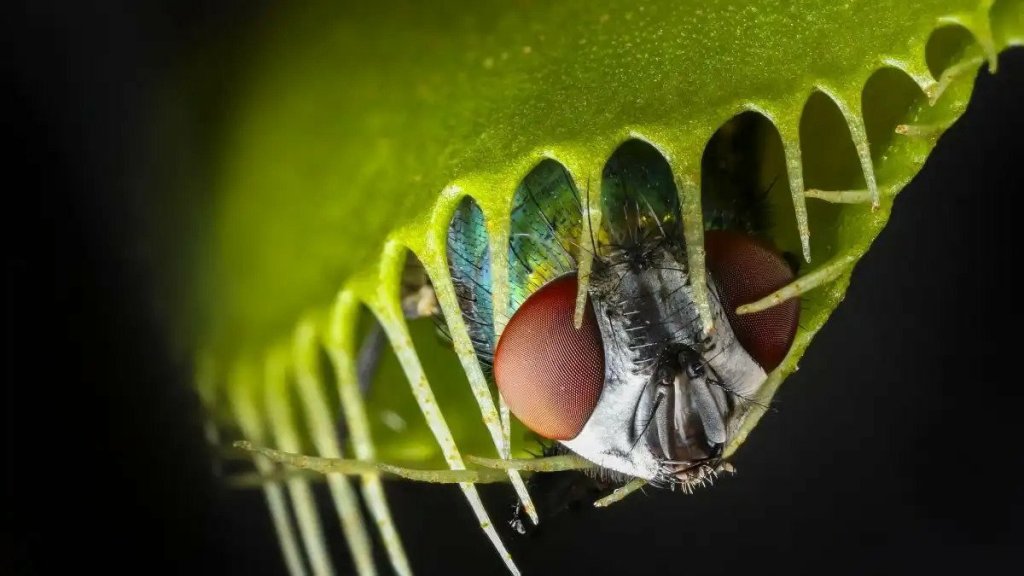
As Victor Albert, a plant-genome scientist at the University of Buffalo, New York, smiles and says, “It’s no wonder Darwin wrote an entire book on carnivorous plants.”
Truer words have never been spoken before!
I loved the content, images and videos 😍👍
LikeLiked by 1 person
Aree thanks a lottttt poo! ❤️❤️ Means the world to me! 🙈
LikeLike
Amazed by plant intelligence. Well written piece with a pinch of humour. Just wondering – how do they multiply ?
LikeLike
Fablious ,
Incredible 👍👍
LikeLiked by 2 people
Thanks! 😁
LikeLike
Tooo goood, you write in a way that turns boring things interesting, I loved reading it😍😍
LikeLike
The varied set of information is beautifully brought together on a subject usually thought to be ‘not-so-interesting’. Great work. 👍 😌
LikeLiked by 1 person
😻😻 means the world! Thanks a tonne!!!! ❤️❤️
LikeLike
Amazing work shourya!!
Superb illustrations 😍
LikeLiked by 1 person
Thanks a lottttttt, pond! ❤️❤️❤️ Means everything to me! 😻😻🙈 Keep supporting! 😁
LikeLike
Amazing description. And the videos just add to the description. Awesome
LikeLike